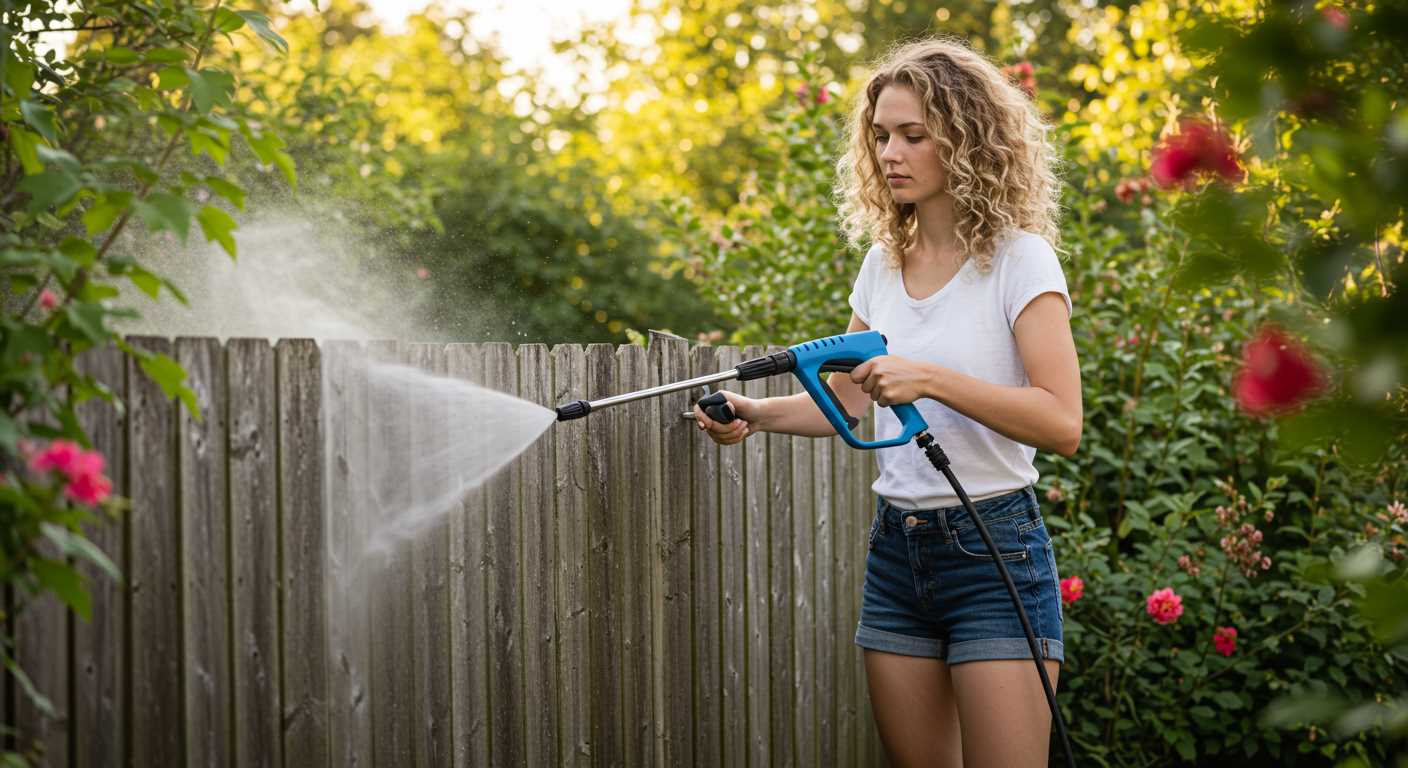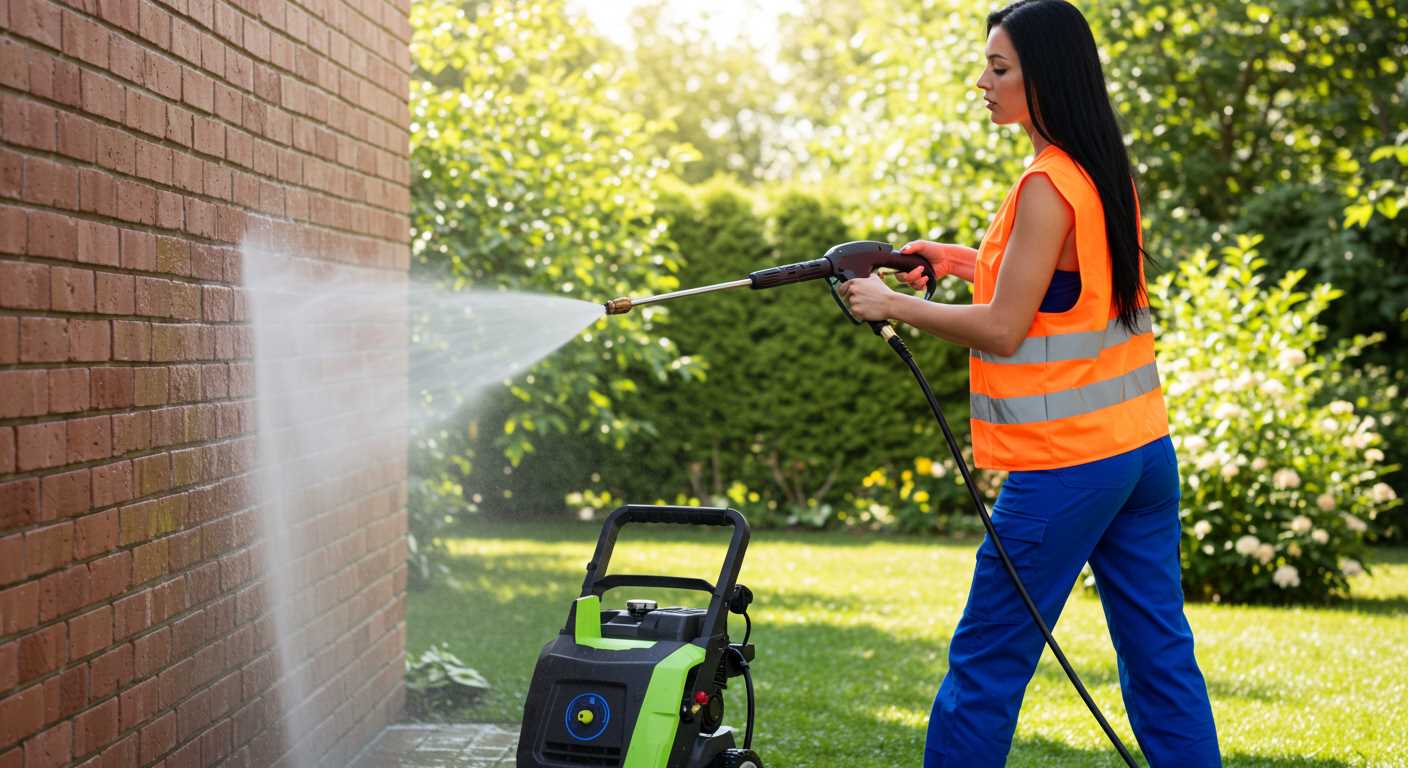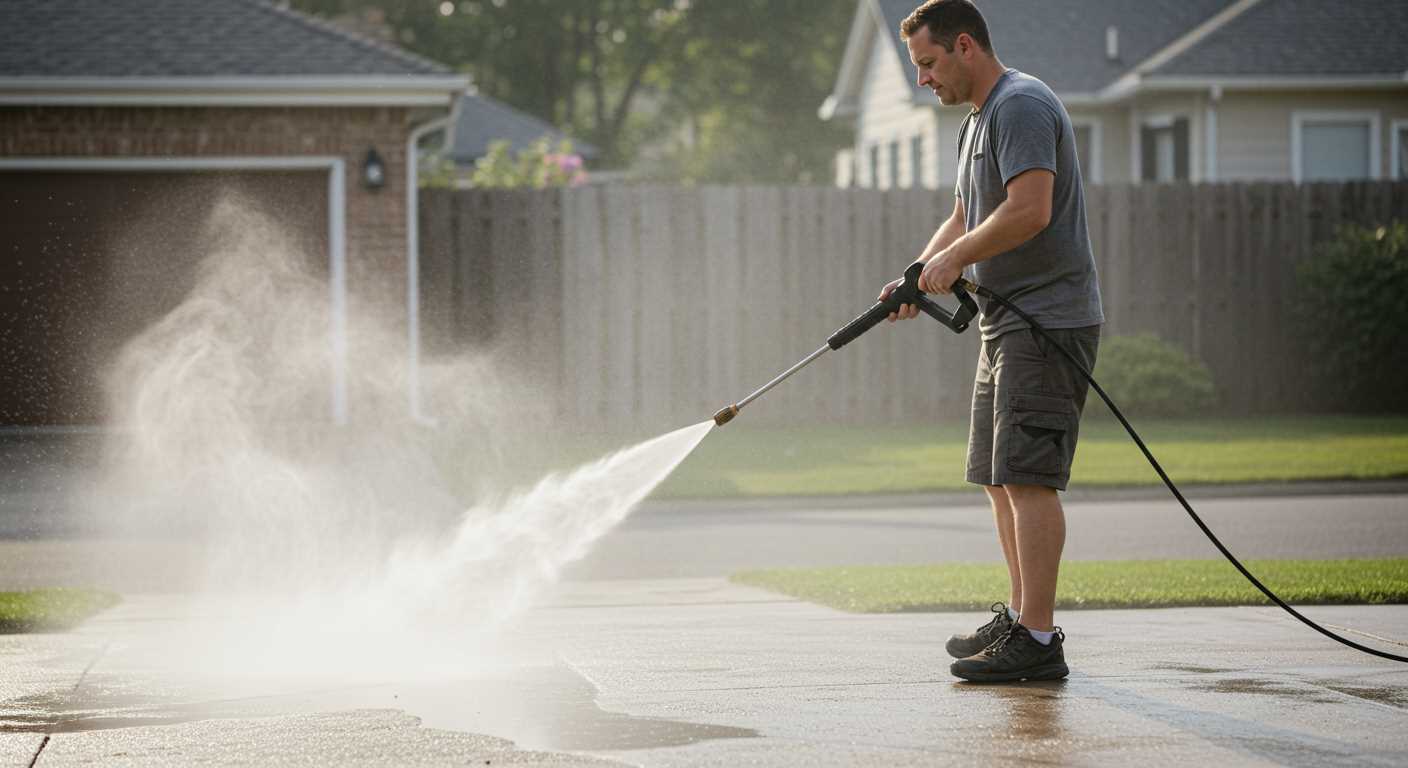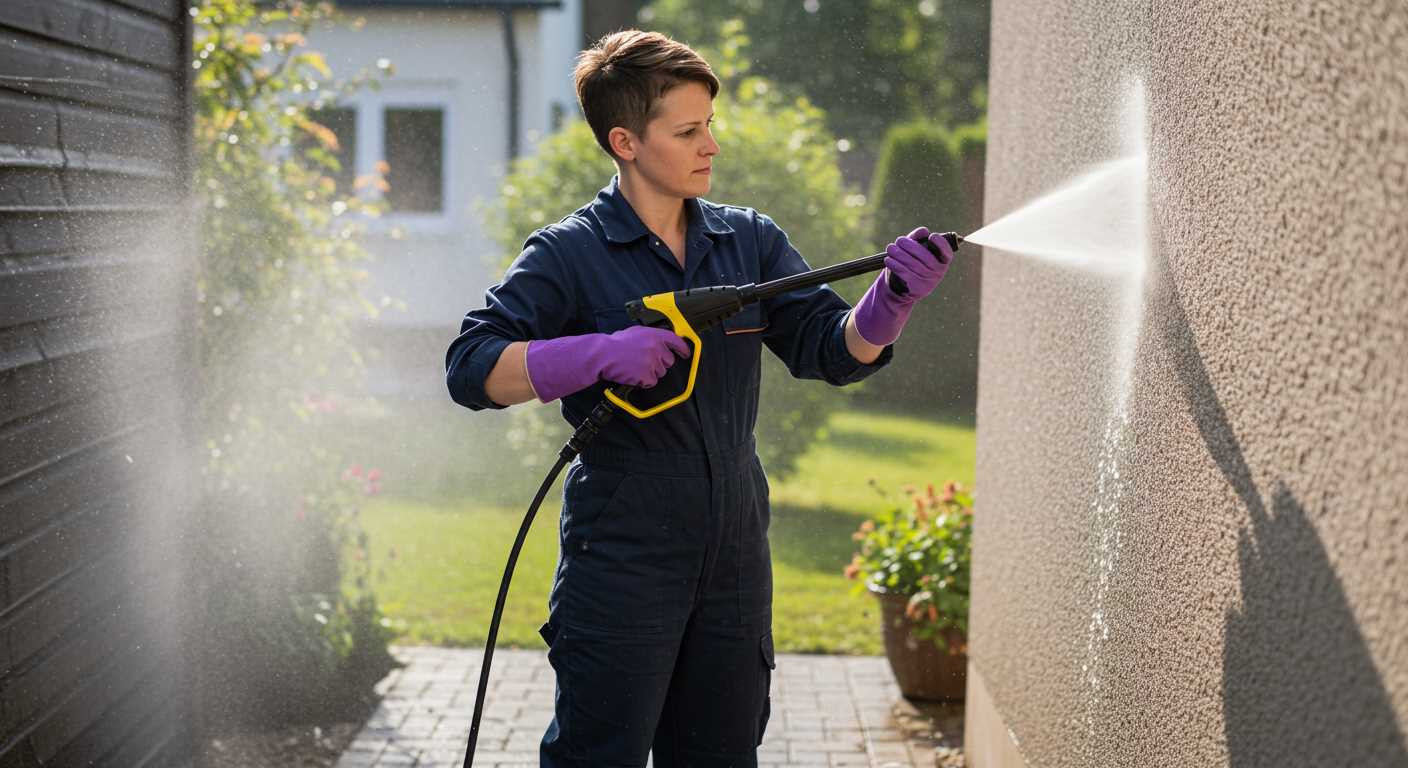



If your cleaning device is failing to generate sufficient force, check the water supply first. Ensure the intake hose is unobstructed and securely connected, as any leakage or air intake can dramatically impact performance. Verify that the water source itself is delivering a steady stream at the right flow rate; inadequate supply can lead to diminished functionality.
Examine the nozzle and make certain it is free from blockages. A clogged or damaged nozzle can restrict the flow, impacting the intensity of the spray. Cleaning or replacing the nozzle may restore the expected output. Additionally, inspect the filters and connections throughout the system; debris accumulation can cause similar issues, negating the efficiency of the entire apparatus.
Consider the pump as well. Ensure it is functioning correctly, as mechanical issues in this component can prevent optimal operation. If you notice unusual sounds or leaks around the pump area, this may signal internal damage or wear that requires attention. Lastly, review the pressure settings to ensure they align with the requirements of your specific tasks, as incorrect adjustments can easily lead to low output.
Reasons for Low Output in Your Cleaning Equipment
First, inspect the water supply. Ensure the garden hose is free from kinks and blockages. Verify the water source is turned on fully. Insufficient water flow can lead to inadequate cleaning performance.
Next, examine the filter located at the inlet. A clogged filter can restrict water intake. Clean or replace it if necessary. Accumulated debris can significantly hinder functionality.
Check for leaks in the hose or connections. Any sign of damage or wear can lead to loss of flow. Inspecting for tight connections can help maintain a stable operation.
Monitor Internal Components
Inspect the nozzle. A blocked or mismatched nozzle can result in decreased output. Clean or replace it according to the manufacturer’s specifications. A wide-angle nozzle may reduce pressure compared to a pinpoint one.
Evaluate the pump system. If it’s malfunctioning or damaged, it might not generate enough force. Listen for unusual noises indicating internal problems and consult a technician if needed.
Address Additional Factors
- Inspect the trigger gun. Ensure it is functioning properly and not stuck in an open position.
- Check the temperature of the water. Cold water models can struggle with thick grime. Consider using a hot water option if available.
- Evaluate the power supply. Insufficient voltage can affect performance. Make sure the equipment is plugged into a suitable outlet.
By systematically addressing these concerns, restoring optimal function to your cleaning apparatus is entirely feasible.
Inspecting the Water Supply Connection
Check the water source first. Ensure the hose is attached securely to both the spigot and the machine. A loose connection can disrupt flow, causing inadequate output. Verify that the spigot is fully open, allowing maximum water to enter the system.
Examine the Hose

Inspect the intake hose for any kinks or damage. A bent or cracked hose can significantly reduce the flow of water. Extend the hose fully and look for leaks or signs of wear. Replace any compromised sections to maintain a steady supply.
Water Filter and Screen
A clogged filter can restrict water flow. Remove the filter located at the connection point and clean it thoroughly. If the filter is damaged, replace it. Regular maintenance of this component can prevent future issues and ensure optimal operation.
Monitor the water pressure from your source as well. If the supply line lacks sufficient water force, it directly affects performance. Contact your water supplier if necessary, and consider using a different source if available.
Checking for Blockages in the Hose
Start by disconnecting the hose from the unit and the water source. Inspect both ends for any visible debris or kinks. Use a flashlight to check the interior of the hose for any obstructions. A blockage can significantly reduce the flow of water.
Run water through the hose by connecting it back to the tap. If water can’t pass through freely, a clog is present. Utilize a garden hose or a thin, flexible rod to dislodge any dirt or grime stuck in the internal walls. Avoid using metallic objects that could cause damage to the tubing.
While the hose is disconnected, examine all connectors and nozzles. Sometimes, dirt can accumulate in these areas. Use a small brush or a cloth to clean the connectors to ensure a proper fit and unobstructed flow.
| Symptoms of Blockage | Potential Solutions |
|---|---|
| Reduced water flow | Clear hose and check all connections |
| Inconsistent spray pattern | Inspect and clean nozzles |
| No water output | Run water through hose to identify clogs |
Always recheck for tight connections once the cleaning is complete. Loose fittings can lead to leaks that affect water delivery, making cleaning tasks less effective. Use Teflon tape on threaded connections if necessary to ensure a secure seal.
Examining the Nozzle for Clogs

Start by detaching the nozzle from the lance. Inspect it closely for any debris or mineral deposits that might obstruct the opening. A clogged or partially blocked nozzle can severely diminish the flow of water, resulting in inadequate output. Use a small pin or a brush to clear any blockages.
Types of Nozzles and Their Maintenance
Different types of nozzles serve various purposes and require specific care. For instance, turbo nozzles, designed for intense cleaning, may accumulate dirt more quickly than standard nozzles. It’s crucial to regularly check and clean them to maintain optimal operation. On the other hand, adjustable nozzles can also develop blockages. Rotating them while rinsing can help in dislodging any particles stuck within.
Testing the Nozzle
After cleaning, reattach the nozzle and perform a test. Aim it toward a safe area and observe the water stream. If the flow appears uneven or weak, further investigation may be needed. Repeating the cleaning process or contemplating a replacement may be necessary if issues persist. Regular maintenance of the nozzle ensures efficient performance and is a key step in troubleshooting.
Verifying Pump Functionality and Condition

Start by inspecting the pump unit for any visible damages. Cracks, leaks, or corrosion can be indicators of malfunction. If you see any of these issues, replacement might be necessary.
Next, check for proper alignment of all components connected to the pump. Misalignment can hinder optimal performance or block the flow entirely.
Make sure the inlet and outlet connections are secure. Loose fittings can cause diminished water flow, which directly affects cleaning capability. Tighten any loose connections carefully, ensuring not to overtighten, which may cause further issues.
Assessing Pump Oil Level
For models that utilise oil, monitor the oil level. A low oil level can lead to inadequate lubrication and eventually render the pump inoperative. If the oil appears dirty or has not been changed in the designated interval, perform an oil change. Refer to the manufacturer’s guidelines for specific oil types and maintenance schedules.
Performing a Pressure Test
An effective way to ensure the pump is functioning properly is to conduct a pressure test. This test measures the output to determine if it aligns with the specifications of the unit. If the output is significantly lower than recommended, it may indicate internal damage or wear.
To conduct a pressure test:
- Attach a pressure gauge to the outlet of the pump.
- Start the machine and allow it to run for a few moments.
- Read the pressure gauge and compare it to the manufacturer’s specifications.
If the reading is below expectations, you may need to consider repairs or replacing the pump altogether.
Lastly, consult the user manual for troubleshooting steps specific to your model, as various brands may include unique characteristics that can affect performance.
Assessing the Pressure Regulator Status
Examine the pressure regulator to ensure it is functioning correctly. Start by inspecting for any signs of damage or wear, such as cracks or leaks. If any visible issues are found, replace the regulator immediately.
Next, check the adjustment settings. If the regulator is set too low, it will not provide adequate force. Adjust the regulator according to the manufacturer’s specifications to restore optimal operation.
Testing Pressure Flow
To confirm the regulator is performing as intended, perform a flow test. Disconnect the spray gun and direct the output hose into a bucket. Activate the unit briefly to observe the fluid stream. A weak or inconsistent flow may indicate a malfunctioning regulator that needs attention.
Signs of Regulator Failure
Be alert for unusual noises or vibrations while in use. These could be indicators that the regulator is failing. If issues persist, consulting a repair technician or considering a complete replacement may be necessary to ensure proper functionality.
Investigating the Unloader Valve Issues

First, locate the unloader valve, typically found near the pump. This component’s primary role is to divert water when the trigger isn’t engaged, allowing for a regulated flow. If this valve malfunctions, it may cause a complete halt in water flow or excessive backpressure.
Check for any visible damage or signs of wear. Cracks or missing parts can directly affect performance. Next, ensure the valve is clean. Dirt or debris can obstruct its movement, leading to inconsistent operation.
Test the valve by manually actuating it; it should move smoothly without resistance. If it feels stuck or doesn’t move at all, consider disassembling it for a thorough cleaning or replacement if necessary. Reassembly should align all components correctly to avoid further issues.
Lastly, monitor changes as you conduct these checks. If normal functionality resumes, the unloader valve has likely been the culprit. If problems persist, further investigation into other components may be needed.
Reviewing the Owner’s Manual Troubleshooting Tips
Consult the owner’s manual for model-specific guidance before diving into troubleshooting. Each unit has unique features and requirements that are crucial for proper diagnostic processes.
Common topics within the manual often include water intake specifications, motor characteristics, and optimal maintenance practices. Take notes on any recommended steps tailored to your model.
Many manuals provide symptom charts, which clarify common issues. Cross-reference your observations with these charts to identify potential causes effectively.
Review troubleshooting sections for detailed instructions on resetting the system. Some models require specific sequences to restart their motors correctly after an interruption.
Pay attention to safety warnings outlined in the manual. Recognising these precautions prevents accidental damage to both the equipment and yourself during the inspection.
Lastly, maintain a checklist from the manual. This approach simplifies the process of going through each step systematically, ensuring you don’t overlook any critical details. Here’s a sample checklist:
| Item to Check | Status | Comments |
|---|---|---|
| Water Supply Connection | ✓ / ✗ | |
| Hose for Blockages | ✓ / ✗ | |
| Nozzle Condition | ✓ / ✗ | |
| Pump Functionality | ✓ / ✗ | |
| Pressure Regulator | ✓ / ✗ | |
| Unloader Valve | ✓ / ✗ |
Regular reference to the owner’s manual not only facilitates accurate troubleshooting but also prolongs the lifespan of your equipment, maximising its performance in the long run.
FAQ:
What are the common reasons for a pressure washer not to produce pressure?
Several factors can lead to a pressure washer failing to generate pressure. One common issue is a blockage in the nozzle or hose, which can restrict water flow. Another possibility is a malfunction in the pump, such as worn seals or insufficient oil. Additionally, air in the pump or water supply issues, like low water pressure, can also contribute to this problem. Regular maintenance and inspection can help identify these issues early.
How can I troubleshoot a pressure washer that is not working properly?
Troubleshooting a pressure washer starts with checking the basics. First, ensure the machine is plugged in and that the outlet is functioning. Next, inspect the water source; the hose should be straight and free of kinks. Check the filter for clogs and ensure all connections are tight. If pressure is still lacking, examine the nozzle for debris and clean it if necessary. If problems persist, the issue may be internal, potentially requiring professional service.
Is it possible for a pressure washer to lose pressure while in use?
Yes, a pressure washer can lose pressure during operation. This situation can occur if there is an obstruction in the water inlet or if the pump is failing. Air entering the system or a leak in the hose can also cause a drop in pressure. It’s advisable to stop the washer and investigate the issue, checking for leaks and ensuring there are no blockages in the hose or nozzle that could impede water flow.
What maintenance should I perform to prevent my pressure washer from having pressure issues?
Regular maintenance is key to ensuring your pressure washer operates effectively. Always start by flushing out the system with clean water after each use to prevent debris buildup. Inspect and replace any worn hoses or connections, and check the nozzle for clogs. Lubricating the pump and checking fluid levels regularly can help prevent pressure issues related to the pump. Finally, store the washer in a dry place and protect it from freezing temperatures to avoid internal damage.
Could the type of detergent I use affect the pressure in my washer?
Yes, the type of detergent used can influence pressure washer performance. Using a detergent that is too thick or not designed for pressure washers can clog the hoses and nozzles, leading to reduced pressure. It’s advisable to use only detergents recommended by the manufacturer. Always dilute the detergent as per instructions to ensure it flows smoothly through the machine without causing blockages.







